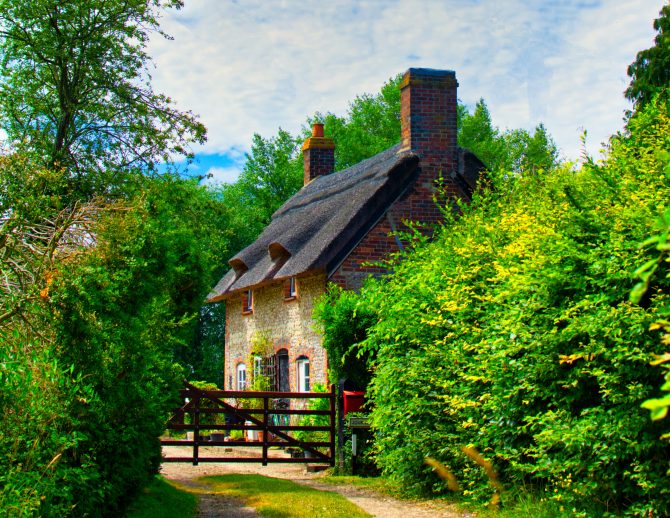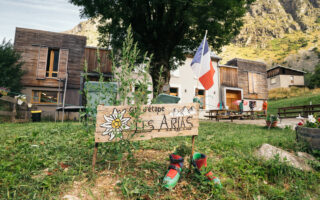Gite Classification in France: How & Why to Classify Your Gite
Essential Reading


Extra income can be tempting, and if you have a gite, it is possible to earn some money by renting it out. To be successful, organisation is key, and what on the surface may seem to be a good idea is also very hard work. To increase those hard-earnt profit margins, official classification by an approved company is an obvious bonus to some -particularly for those whose main source of income is from their Gite business. Read on to decide for yourself.
Gite Classification: Will Your Gite Meet the Standards?
What constitutes a gite? This may seem like an obvious question, but before attempting classification, it is wise to ensure your property meets the minimum criteria.
According to the law, a gite is deemed as “furnished accommodation for the exclusive use of a temporary, seasonal tenant”.
To qualify as ‘furnished’ the gite must have:
- Bed linen and a quilt
- Curtains/window furnishings
- Cooking facilities such as a hob, oven or microwave
- A fridge and freezer
- Sufficient crockery, cutlery and equipment
- A seat and a dining table
- Shelves
- Lights
- Cleaning materials
You can find full details here.
For a gite, the rental accommodation is seasonal only; in other words, the tenant resides there for a temporary period of time. The maximum occupancy by the same tenant is 90 days or 12 consecutive weeks.
To rent out your accommodation, you must have permission from your local Mairie, and there is a form to complete. It is advisable to speak to your Maire first, after which you can register online here.
Owners must make sure the appropriate insurance is in place, which is different to standard home insurance, and the gite must also conform to health, safety, and fire legislations. Your local Maire or Tourist Office will be able to advise you on this.
If you intend to allow, your guests access to a swimming pool, research the laws concerning this with regard to public safety. No one wants anybody to be injured, or worse, so do your homework carefully. Aside from potentially having a tragedy on your conscience, fines can be hefty and ruinous. Be warned.
What Are the Advantages of Having Your Gite Classified?
Costs in classification vary, and any outlay needs to be weighed up against its potential return. Some of the more obvious benefits to classification are:
- A transparent national grading system offers your customers confidence and clarity
- An ability to join the Holiday Cheques scheme so that French customers can pay with Cheques de Vacances which appeals to many – especially the family market
- A flat-rate tax allowance of around 71%
- Reduced URSSAF contributions (read more about this here)
- Increased income ceilings for professional microenterprise (LMP)
- Increased consumer confidence from having a nationally recognised rating
Depending on your individual circumstances, the sums may stack up favourably on the side of classification. For more information on the financial implications, always seek professional advice regarding your own personal situation.
How Are French Gites Classified?
Meublés de tourisme refers to a classified gite and there is a 1 to 5 point grading system. Non classified gites are called Meublés non-classes.
Gite owners can apply to one of the registered bodies to obtain classification status. The accreditation is carried out by a third party regulated by COFRAC to agreed national standards.
Gites are evaluated across three main categories: level of comfort, good environmental practices, and equality of access for all. The classification lasts for 5 years.
How to get your gite classified: step by step
- Look for an accredited evaluation company. Search on ATOUT France or COFRAC for officially registered companies; otherwise, you may have just wasted your time and money. This list is a good starting point.
- Make contact and be sure to check the prices of classification in advance – these can vary substantially.
- Choose the company and set up a visit for your gite to be classified.
- Read the criteria carefully before you prepare for your visit. You will want to ensure you meet the criteria for your desired star rating.
- Make sure your property is ready for the visit: your gite must be vacant, and you should set aside adequate time for cleaning and preparations.
- After the visit, await your grading documentation and consider how to publicise this to your customers. Note that the higher the star rating, the higher Taxe de Sejour your customers will pay.
Happy giting!
Share to: Facebook Twitter LinkedIn Email
By Carol Paylor
Leave a reply
Your email address will not be published. Required fields are marked *



